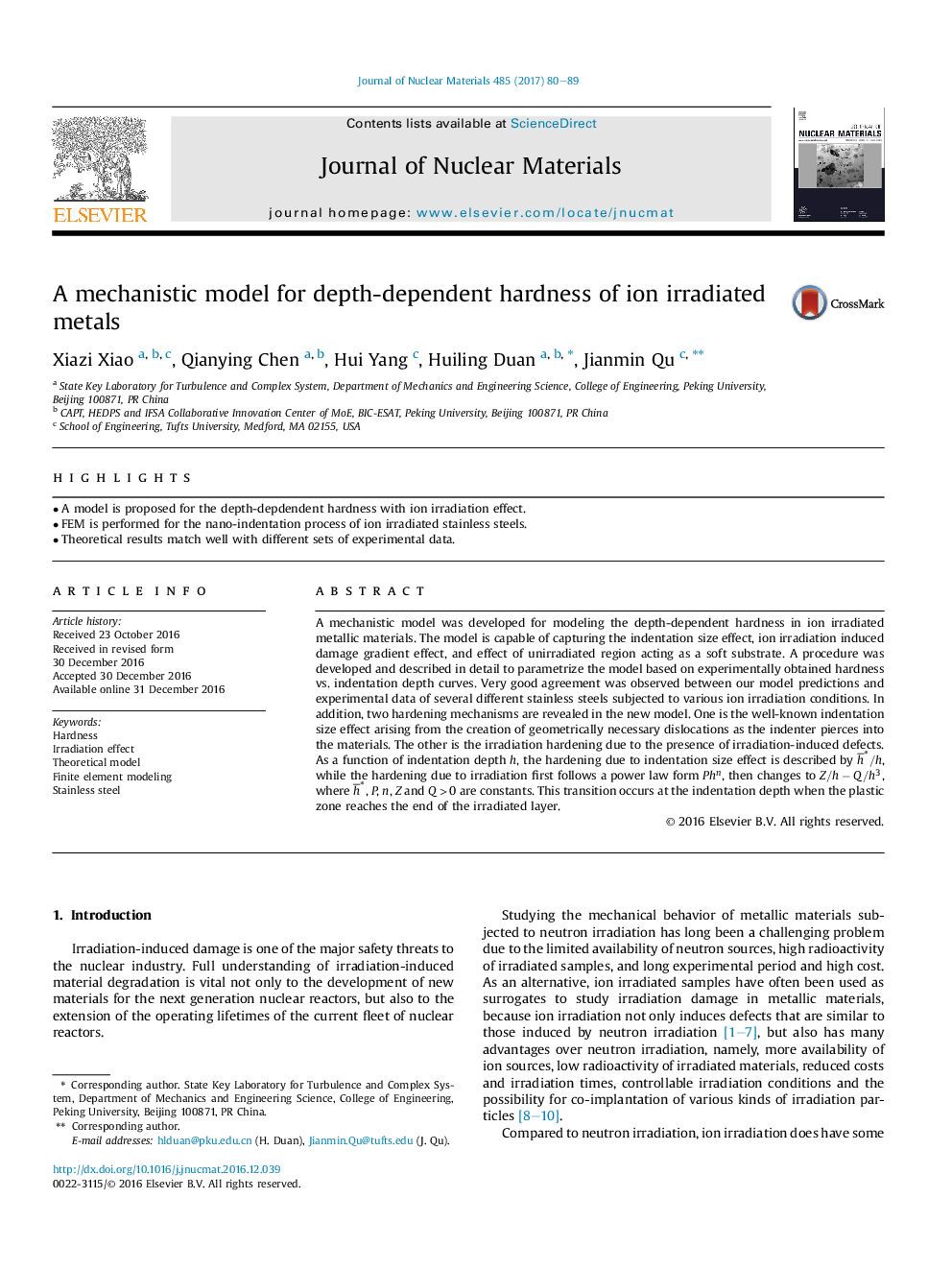| Article ID | Journal | Published Year | Pages | File Type |
|---|---|---|---|---|
| 5454276 | Journal of Nuclear Materials | 2017 | 10 Pages |
Abstract
A mechanistic model was developed for modeling the depth-dependent hardness in ion irradiated metallic materials. The model is capable of capturing the indentation size effect, ion irradiation induced damage gradient effect, and effect of unirradiated region acting as a soft substrate. A procedure was developed and described in detail to parametrize the model based on experimentally obtained hardness vs. indentation depth curves. Very good agreement was observed between our model predictions and experimental data of several different stainless steels subjected to various ion irradiation conditions. In addition, two hardening mechanisms are revealed in the new model. One is the well-known indentation size effect arising from the creation of geometrically necessary dislocations as the indenter pierces into the materials. The other is the irradiation hardening due to the presence of irradiation-induced defects. As a function of indentation depth h, the hardening due to indentation size effect is described by h¯â/h, while the hardening due to irradiation first follows a power law form Phn, then changes to Z/hâQ/h3, where h¯â, P, n, Z and Q>0 are constants. This transition occurs at the indentation depth when the plastic zone reaches the end of the irradiated layer.
Related Topics
Physical Sciences and Engineering
Energy
Nuclear Energy and Engineering
Authors
Xiazi Xiao, Qianying Chen, Hui Yang, Huiling Duan, Jianmin Qu,
